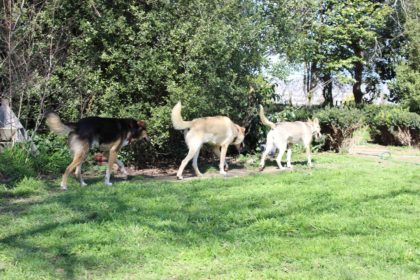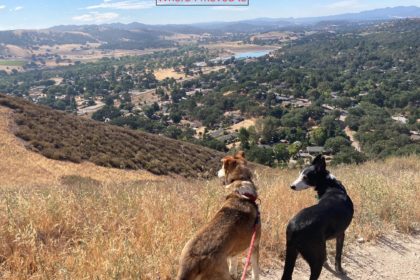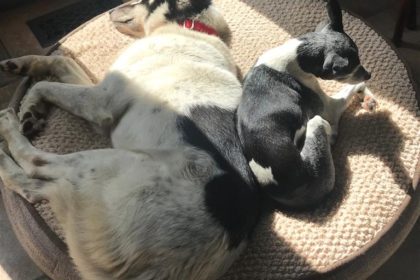At several points in our CB300 video debrief series, we referred to our “race plans.” It occurred to me that you might like to see what we’re talking about, so I asked Aliy if I could post them now that the race is over and there’s nothing “secret” about them anymore.
Aliy responded: “Sure, you can post them. But do you really think anybody wants to see them? They’re kind of technical and boring, don’t you think?” Alas, we have a good question. Aliy doesn’t think you’ll find them interesting, and I think many of you may downright drool over them. So, here we go!
If you click on the image below, a PDF of our CB300 race plans will open in a new window: If you’ve gone this far, let me tell you just a bit about what you are looking at:
If you’ve gone this far, let me tell you just a bit about what you are looking at:
The first page is Allen’s race plan. Mainly, it’s a spreadsheet that does a bunch of “time and date” calculations. Starting at the top we make some calculations for starting time, start delay based on bib number and the “differential” of starting times that has to be made up on the long mandatory rest.
In the table, you will see legs of the race from checkpoint to checkpoint, including miles in between and figures for run hours and rest hours. Run hours were estimated by Allen — based on his many years of experience with the race — as the amount of time it would take him to run each leg in “normal” conditions. Rest hours show his pre-planned rest strategy.
Then the spreadsheet does it’s thing and calculates OUT and IN times to come up with Scheduled Times. These times are useful in a number of ways. First, they can help the mushers before the race to have an idea roughly what time of day they expect to be someplace, and to plan accordingly for night travel, heat of the day, their body clocks, meal times, etc. During the race, the plan is useful for the handlers to have a vague clue about where they need to be and by when in order to support the mushers. As the race goes on, the schedule can be adjusted based on progress, and this is a lot easier to do by working off the plan than it is to do in your head when you are cold, hungry and exhausted.
As you can see, Allen got ahead of his plan and stayed there, finishing 73 minutes ahead of plan. Aliy’s plan is basically the same as Allen’s, except that it factors in a 5% addition to her run times — to account for her team being not quite as fast as his — and she was never more than 16 minutes off her planned pace. Bridgett was on a somewhat different plan for rest hours, and her run times were based on Allen’s plus 10% — a bit of a wild approximation — and she finished only 61 minutes behind the plan.
Having read over what I just wrote, I’m starting to think Aliy may be right. Is this kind of “totally insider technical mumbo jumbo” something you are interested in getting on the Dog Log once in a while?









Drool
Tell Aliy that it's really cool to see these – very interesting!
I love this kind of stuff, actually. I've done similar logistics for backpacking trips, so it's fascinating to see how this compares. Do most mushers do something like this, in terms of estimating how their race will go?
Definitely drool……
It's cool BECAUSE it's insider mumbo-jumbo.
What y'all are doing is so far from what most of us will ever do– a multi-day race, with dogs, in the wilderness. The details are fascinating because they contribute to answering "how does all that work, anyway."
Thanks for sharing with us, again and again.
Really interesting, yes, thank you!
Good stuff-People are wanting to know how mushers keep thing on track. Just like a marathon runner has a plan.
I think it's great! I'd even like to see the training schedule numbers, I've always wondered how you decide to train which dogs when. I remember a video about the whiteboard and a book that Aily keeps…. but putting those numbers up might be giving too much away!
Cool guys, and great job racing!
Nice to see I'm not the only one who does this, although mine is chicken scratching in a notebook.
I finished 6 minutes ahead of my schedule…
Yep, I liked it too
Yes, definitely drool. Just as football fans love to see the Xs and Os, this gives us an "insider" look into what goes into racing. Thank you for sharing!
Boring? AS IF! Very cool to see the technical inside stuff.
I agree! I don't think I could ever be bored reading your posts! The more the merrier!!!
This type of information blows the uninformed concept of "just running dogs" out of the water. This emphasizes the thought and planning that go into a race, even a shorter one. Any information is great –
very interesting,thanks for posting
This is so great! I don't think there is anything you could share that I wouldn't love! Its nice to see the planning and strategy that goes into the racing, especially for someone who know so little about it!
Not only is this information fabulous in helping me understand the thought that goes into a race, but I can just imagine what goes into the Iditarod!
Thank you all, for sharing with us armchair mushers, the details of the race.
Again, job well done!!
Wow. I guess I was wrong!
Aliy
I thought it was very interesting! Thanks for posting!
Aliy,
Sometimes what you may take as boring or everyday, others take as valuable information into the running of a mushing kennel.
I love learning about how a professional kennel is run, and no, I'm not your competition. Truely!
This is the best website on mushing!
I love what SP Kennel is doing to educate the masses about mushing.
Keep up the good work!!!
Very interesting